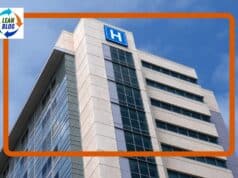The main point of the article is that, on freeways, attempts by individual drivers to go faster (changing lanes, etc.) can slow down traffic overall, causing more individuals to change lanes, leading to a downward spiral of traffic delays.
Carlos Daganzo of the University of California, Berkeley, was puzzled by what highway sensors showed: When congested traffic forms upstream of a bottleneck, the rate at which cars at the front leave the congested area decreases. “It's as if, when a line forms at the popcorn stand, the server slows down, so people leave with their popcorn at a slower rate just because there are more people waiting,” he says.
Yet the counterintuitive effect is seen time and again, and in a recent study he and colleagues figured out why. The congestion causes cars to jockey across lanes, ever on the lookout for the faster one. Lane changing increases the gaps between cars, as drivers slow down when someone barges in front of them. Bigger gaps means fewer cars per second leaving the front of the jam.
Does the same thing happen in factories when we expedite? Does that behavior, trying to push a single order/unit through, slow down all the others? From my experience, it does. You'd think it would be easier to control factory flow than thousands of independent freeway drivers! Maybe traffic will be better when we have computer controlled driving that takes that out of our hands?
Please scroll down (or click) to post a comment. Connect with me on LinkedIn.
Let’s work together to build a culture of continuous improvement and psychological safety. If you're a leader looking to create lasting change—not just projects—I help organizations:
- Engage people at all levels in sustainable improvement
- Shift from fear of mistakes to learning from them
- Apply Lean thinking in practical, people-centered ways
Interested in coaching or a keynote talk? Let’s start a conversation.





![What’s Your Organization’s Real Mistake Policy? [Poll]](https://www.leanblog.org/wp-content/uploads/2025/07/Lean-Blog-Post-Cover-Image-2025-07-17T085114.134-238x178.jpg)


![What’s Your Organization’s Real Mistake Policy? [Poll]](https://www.leanblog.org/wp-content/uploads/2025/07/Lean-Blog-Post-Cover-Image-2025-07-17T085114.134-100x75.jpg)
